
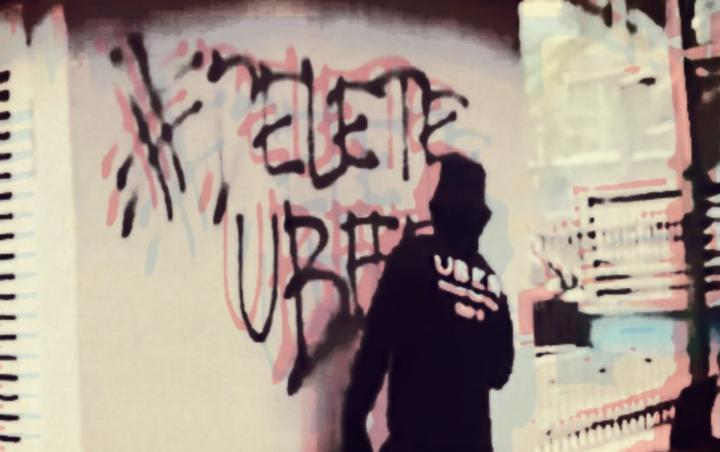
As the “uberization” of the US economy continues, along with it is an ever precarious workforce struggling to make ends meet in the dog-eat-dog world of the so-called “sharing economy.” This trend is the same around the world, with Uber claiming to have more thantwo million drivers in over 80 counties across the globe now.
In Indonesia these conditions are little different. But radical unionists are hoping to change this and are organizing to take back their dignity, better pay and conditions and for great control over their work and lives. Kommunitas Uber Mainstream, abbreviated KUMAN which means ‘bacteria,’was formed by three Uber motorcycle drivers in the Spring of 2017. They have since crafted a list of 14 demands, led four one-day strikes and have grown to a membership of 6,000 drivers. All but two are male in the male dominated field of drivers.
KUMAN is structured horizontally with regional sections meeting
regularly in parks or other available spaces to discuss strategy and in
turn chose delegates to larger general meetings. The union has no dues
and supports itself largely by sale of stickers and t-shirts. Drivers
can become members by proving they are an active driver and answering
three basic questions: 1. What’s your perspective on this group?, 2. Are
you a freedom fighter or a loser? and 3. What do you know about what
working with Uber is like?
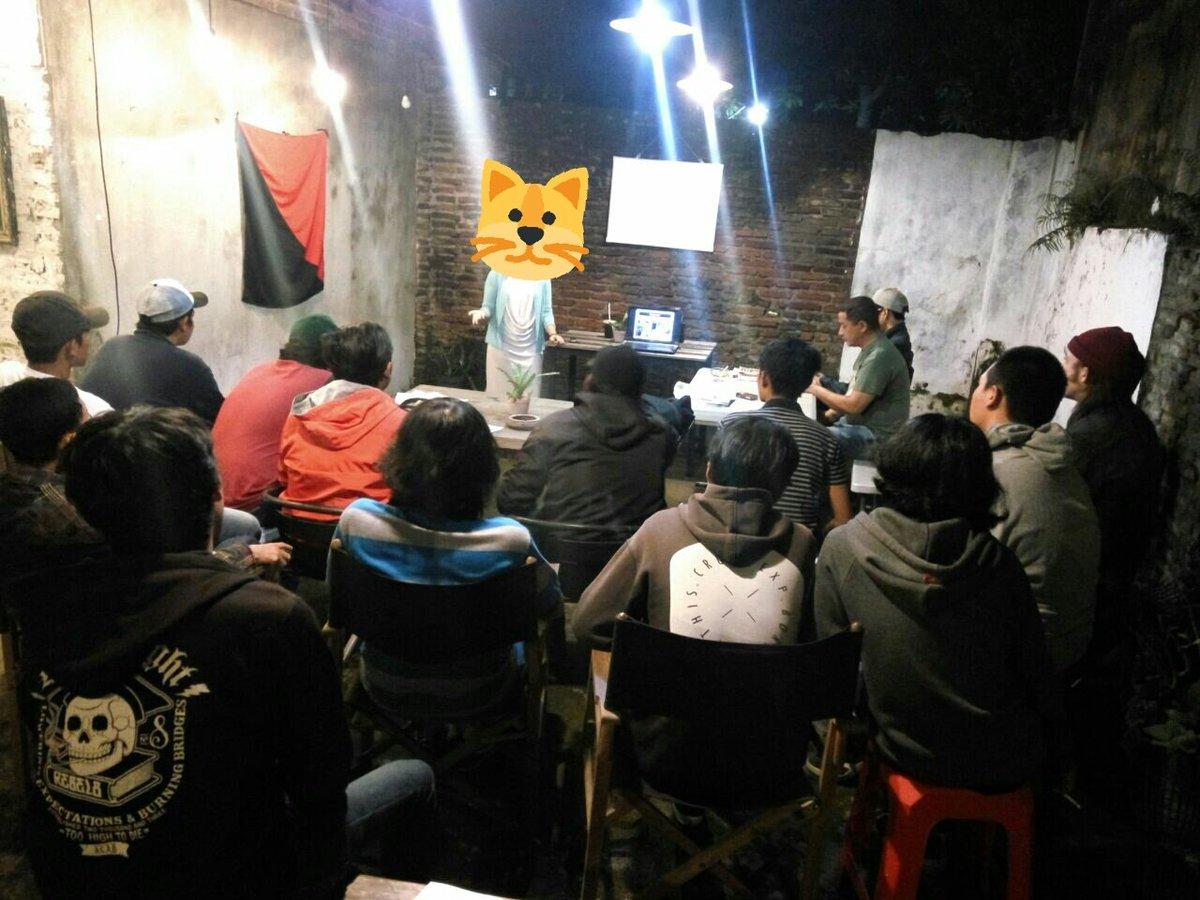
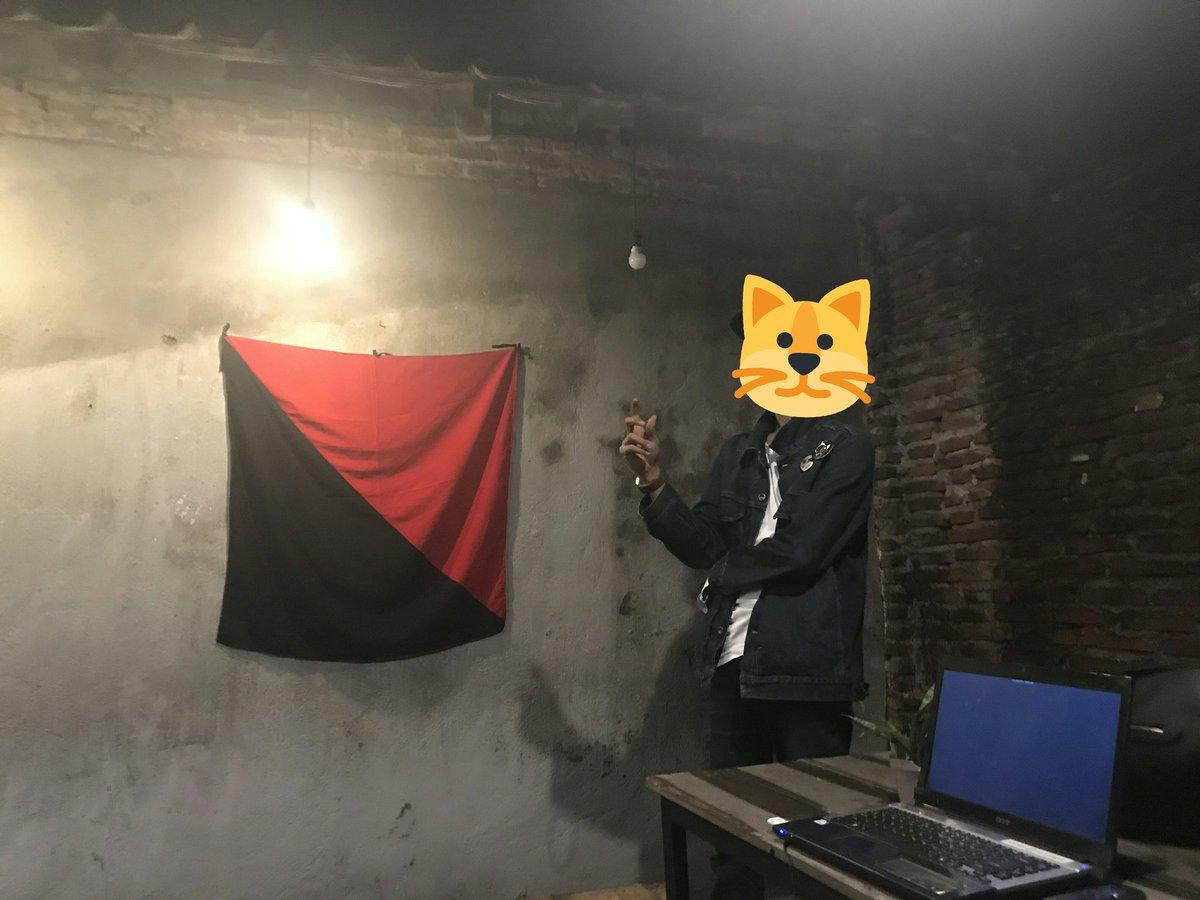
KUMAN works together with Persaudaraan Pekerja Anarko-Sindikalis (PPAS), the two-year old anarcho-syndicalist initiative in Indonesia and an affiliate of the International Workers Association (IWA). The majority of the union has decided to adopt the ideas and strategies of anarcho-syndicalism for their struggle, although other political tendencies exist within the union.
KUMAN is continuing to escalate the fight for justice at Uber,
with more strikes and actions planned. We hope that this interview will
help inspire solidarity with their cause, so that workers around the
world will answer KUMAN’s next call for action and join in putting
pressure on Uber. We particularly hope that other rideshare and sharing
economy workers will learn from the experiences we share here and
connect with KUMAN drivers to build international networks of struggle
and organization.
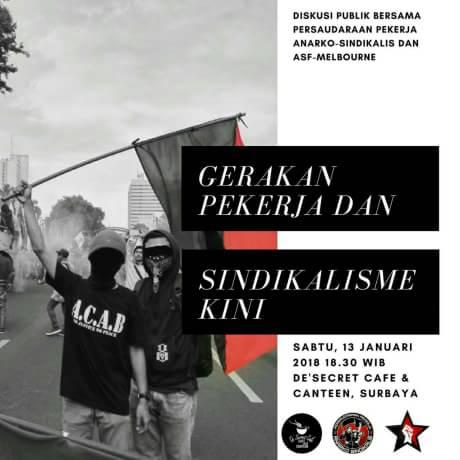
We were excited to be able to talk with Enrique, an Uber driver from Jakarta, Indonesia who was one of the initial three founders of KUMAN. We were also joined by Ricardo, originally from Surabaya, Indonesia but now living in Melbourne, Australia. He works in retail grocery and is active with the Anarcho-Syndicalist Federation – IWA. The interview was conducted by Jesus, a Los Angeles based healthcare worker with Black Rose/Rosa Negra. The three sat down together in a cramped Hong Kong hostel room to talk about the situation of Uber drivers in Indonesia now and how anarchist ideas are being applied to build workers power among drivers in Indonesia.
Please note that for purposes of translation, clarity, and length this interview has been heavy edited.
Jesus: Can you tell me what an ordinary day of work with Uber is like in Jakarta?
Enrique: We start driving with Uber from 5:00am until maybe 9 or 10:00pm. Just only get ten bucks, this is crazy. There’s a long day, just small money.
Jesus: So you earn on average USD $10 per day after working 14 hours. Wow. Tell me, why did you start working with Uber? What were you doing before you worked for Uber?
Enrique: I am a salesman. I have a job in a retail department store. And I’m driving Uber just to get extra money. Basically my job starts from 7:00am to 4:00pm and I start again with driving with Uber from 5:00pm until 10:00, maybe 12:00am. I have to get extra money to live in Jakarta. We need it.
Jesus: And how much money do you make driving Uber versus working at the retail store?
Enrique: Just five bucks working Uber. The retail store gives me 3.7 million Rupiah per month [equal to USD $270].
Jesus: So that’s also about $10 per day. But when you get paid by Uber then you have to spend the money on working for Uber. Your motorcycle, your gas.
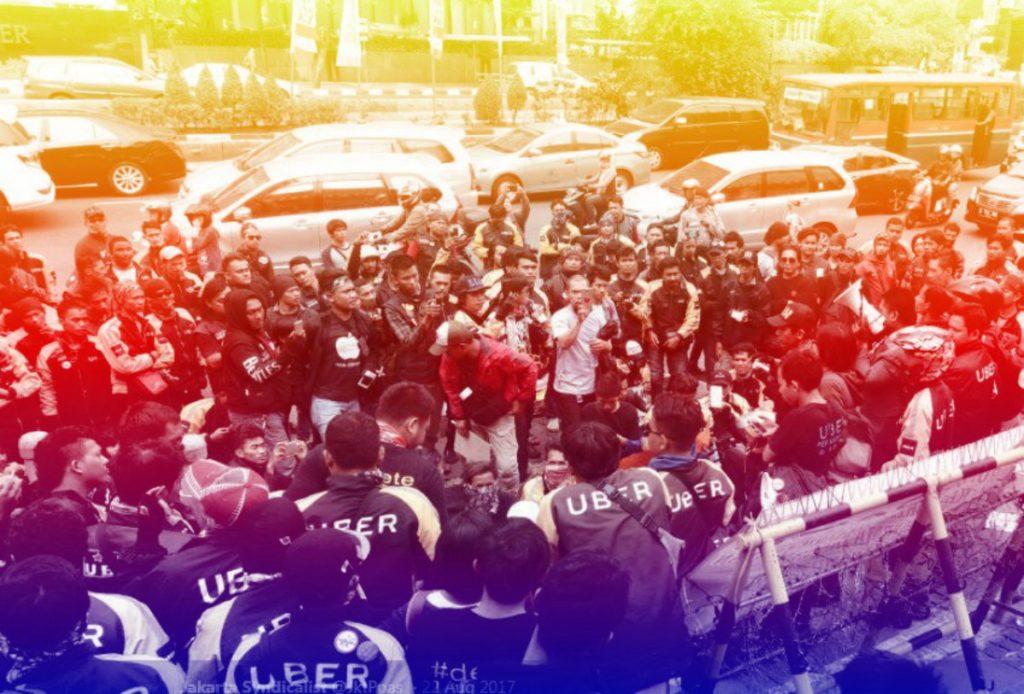
Enrique: For maintenance, the gas, and the machine. Service, everything. And the radio also.
Jesus: What does Uber actually give you?
Enrique: Nothing.
Jesus: What about your Uber motorcycle jacket?
Enrique: No, we have to pay for the jacket and the helmet. Uber still takes our money for the jacket and the helmet. And they don’t give anything, don’t give anything, don’t give anything. For the full-time Uber drivers, it’s really hard. It’s really hard.
Ricardo: You know, the cheapest you can spend, the cost per day in Jakarta, the least you can live on is like $5 or $6, that’s the cheapest. That’s the least, that’s minimum. You only maybe eat rice, eat more rice than meat. I can have one and a half rice instead of half rice with a lot of meat. And sometimes they only have for dinner five minute noodles with the rice. For me, it’s a bit funny, carb and carb together. Noodles and rice, that’s all carb in there, there’s no protein or nothing. Some of them they really only eat noodles, like five minute noodles every day.
Jesus: What are some of the other problems with Uber?
Enrique: The insurance. The policy insures you, the driver, if the driver is with the customer. So, if you are on the way to pick up the customer, and you have an accident on the way, the policy doesn’t cover you.
Jesus: And there are a lot of drivers who have accidents while not covered by Uber’s insurance?
Ricardo: Yes. Until now that gives us more than 15 drivers who have died like that. And there’s also a lot of accidents, like light accidents.
Jesus: Have you had any accidents?
Enrique: Yes, it’s like an accident, but no die, yes. I not go to the hospital, I just buy the medicine for myself. You want to see this?
Jesus: There are scars on your leg. Did you have broken bones, or you just lost skin?
Enrique: Just lost skin, just lost 2 cm of skin. I paid for myself at a clinic. And a clinic in Indonesia is sometimes not a proper clinic. When I had the accident I called the customer service and…
Jesus: The Uber customer service? Wait, why customer service? You’re not a customer.
Enrique: Yes, a customer of the app. Not an employee. And they say, oh, I’m sorry, we can’t handle your accident, because there’s no insurance policy. You’re not in customer…
Ricardo: You’re not with a customer so that’s why they don’t cover.
Jesus: To go back to the money issue, you were telling me how much an Uber driver makes per day, roughly. What’s the pay per kilometer?
Ricardo: 1,250 Rupiah per kilometer [less than 10 cents in US dollar].
Jesus: When you have a customer with you. But sometimes it can be lower, right? If there’s a promotion.For example, if Uber tells the customer, your ride is half off today, what happens?
Ricardo: I’ll explain it. If there’s a promotion, 20%, maybe the customer would pay 25,000 normally, but with 20% discount the customer only pays 20,000. So the drivers get paid from the 20,000. Not the 25,000. They pass the cost of the promotion on to the drivers. The driver should get paid 10% of that 20,000.
Jesus: You only make 10% of what the customer pays – and after the discount for promotions. And there have been times when customers get a free ride promotion, right? And then you get paid….
Enrique: Zero percent. I get nothing, I get nothing.
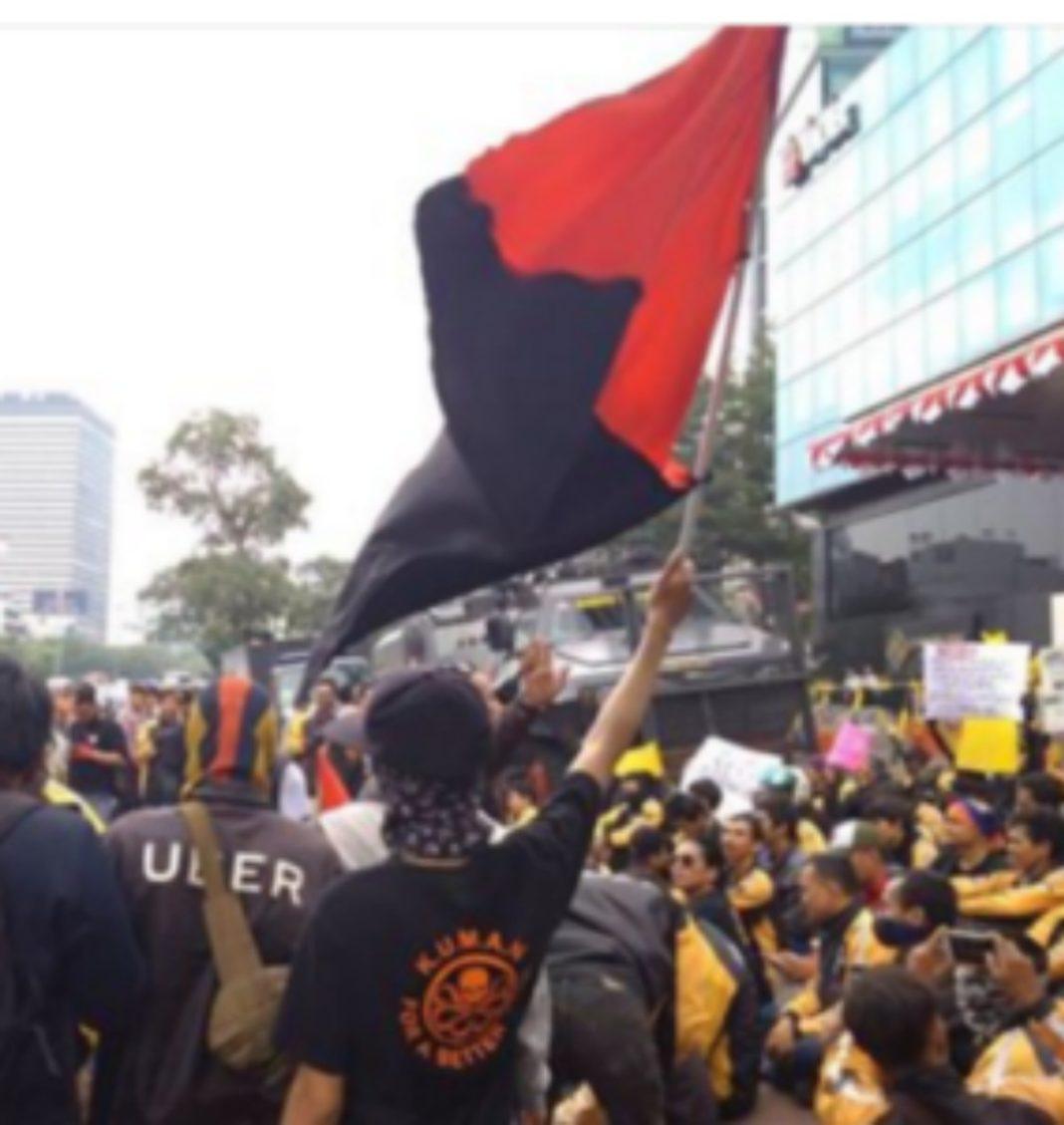
Jesus: How did you start talking together with your co-workers about challenging this, and how did you start fighting?
Enrique: We started with three people. We had been in other unions, KUMI and SUMI.
Jesus: And they kicked you out after you tried to organize a fight against Uber?
Enrique: That’s correct. I had an idea with this before this union KUMI betrayed me. I spoke with them, “Hey, it’s time to us to fight against the new slavery!” “Hi, what are you talking about? You are crazy, man.” “No, I am not crazy. What do you think we have to do? You are the fucking bastard! You are the crazy one! You don’t want to fight against the slavery.” “No, we don’t have to fight, we just follow the Quran.” “This not my Quran.” “So, get out of here!”, they talked with me like that.
And what I was thinking was, I have to take it to another of my friends. So we have to do something with this problem in Uber Motors, especially for motorcycle drivers. We started everything. What do we for the next step? So we made a group in Facebook and we started with the information about the insurance, about the wages, about anything we feel that is not correct for us. I get a group in Whatsapp and just talk about the trouble at Uber Motors. So from the three people, then we had ten people, and then 100 people, until 500, 1,000, and 6,000 members until now.
So the first action we started in May. Then July, August, and September – we had four strike actions with the same demands.
Jesus: Did you know these two other people before?
Enrique: Yes, I know these two people, it’s like, for example – “Hey guys! we got a problem, we have to solve it. We have to find the way to make a struggle, to collect other people, the Uber motor drivers. So, I have a plan, so we have to do this. Okay guys, so you have to do this and you have to do this and I will do this.” We shared about the job and what we want to do. And I do it, and we did it, and we started the struggle. And we still haven’t got a win. But we have to try!
Ricardo: Yes, it’s not easy and we still have to push people, “continue, continue”, and let more people know that Uber is not doing the right thing.
Jesus: When did the three founders of KUMAN come into contact with PPAS [Persaudaraan Pekerja Anarko-Sindikalis]?
Enrique: We, the three people, met with PPAS after the second strike. We had to learn about the strategy. My friend, he said, okay guys, maybe you want to talk with someone, with my friend. He had a friend, he was a member of PPAS. So we start about the strategy. And we start affiliation with PPAS after the second strike.
Jesus: When you say there’s an affiliation between PPAS and KUMAN, what does that mean?
Ricardo: It’s working together. PPAS is well enough educated on anarcho-syndicalism. And most of the KUMAN members, they want to have a syndicalist union. So at the moment PPAS supports them with education – What is anarcho-syndicalism? What is a syndicalist union? And they also support with “this is how to organise, this is how…” everything like that. And PPAS also wants the ASF to back them up with this. This is a really big fight for PPAS, this is really big. This is not a local company, but this is a bigger company with the biggest money with them. PPAS is small and they have to support the 6,000 KUMAN members…
Enrique: But we learn, we learn.
Jesus: Can you describe some of the education that PPAS has done? I know that PPAS has given talks and workshops for KUMAN members. Can you describe one of those?
Enrique: About how to make an organization, and how to move, it is like just for…
Ricardo: For moving from the small group into the bigger group.
Enrique: And, what we must do, for example like a struggle, a strategy, like anything. And then more importantly we have to….
Ricardo: Mission and vision. They taught them how to understand what you really want with your union. So, what is your mission. It is coming back to them – it is not from PPAS, but PPAS just makes sure that they know, if this is what you want, then this is how to do it. Something like that. So that is the PPAS strategy in how they educate, and I think they also educate on what the anarcho-syndicalist platform is.
Jesus: What does anarcho-syndicalism mean to you, Enrique?
Enrique: That there is no leadership, and for me, leadership is bullshit.
Jesus: I think you said that in KUMAN, for the union general assemblies you change who’s leading the meetings.
Enrique: We always change. Who wants to talk? Okay, he wants to talk. So we give him the time until the meeting to change with another person to make a presentation, maybe; but just that. No leadership. Leadership just makes an elite, so an elite maybe will feel that: Hey, I have you guys, you have to do this, you have to fight with this, or anything. So I don’t like it.
Jesus: Can you talk about the union’s vision, what is KUMAN’s vision?
Enrique: KUMAN’s vision is that we want drivers to be in control with management.
Ricardo: So, they want to have power to negotiate what the policy should be. That is what they want. They also have a mission to gather all the driver unions in the same side. They want to make a bigger union, and even different platform apps.
Jesus: So one union for all the different ridesharing apps?
Enrique: Yes. Like GoJek, Grab, others.
Ricardo: GoJek is the first ride sharing app in Indonesia. GoJek also has Go-Food, like for delivery.
Jesus: How is the anarcho-syndicalist model different from other forms of unions or other political positions that you might encounter in Jakarta?
Enrique: Anarcho-syndicalism, for me, means we work together, we learn together.
Ricardo: The thing that he tried to explain to me a little bit, is that there is no hierarchy in there; they are doing direct action. The difference with the other unions that we have in Indonesia is a lot of them are the… I’m not saying that they’re yellow [allied with the company], I’m more saying that they’re are fake unions. 80% of all the unions are only there to take money from the workers. They fight for their own agendas of the union leadership and they use the workers to get what they want.
Jesus: Have you ever been a member of another union?
Enrique: No. About unions, I didn’t have a basic understanding. Just learning about the situation, I guess. Learning about how to solve this problem. I have to think and I have to do, that’s just it.
Jesus: Can you tell me about the first strike? How did you decide to go on strike back in May?
Ricardo: The trigger of the strike was when Uber tried to reduce the driver bonus – when you gave 35 trips in a week you got a 350,000 Rupiah [USD $26] bonus. Then they cut to 35 trips and you get only 150,000 Rupiah [USD $10.50]. That is the trigger. After that they have found everything else, like the insurance policies. When they started, it was not with all the fourteen demands against Uber, but they started from one and they found another, and another.
Jesus: So the first demand was against the cut to the bonus system?
Ricardo: Then it was getting bigger, and they found that the policy for the insurance is no good.
Jesus: What was the first strike like?
Enrique: We made flyers, in Facebook, WhatsApp group, and Telegram. We made the flyers one week before the strike, saying at this date we will come to the hot spot.
Jesus: During the strike drivers log out of the Uber app, right? They go offline?
Enrique: They go offline, all day long.
Jesus: And then you asked people to come to the Uber offices to have a demonstration?
Enrique: Yes, right.
Ricardo: Not every driver comes, and there are usually still drivers online. It’s not everyone out for the first strike… How many people were in the first strike?
Enrique: In the first, maybe 70 to 100.
Jesus: What did you do at the demonstration?
Ricardo: They made speeches outside the Uber building. They also had banners…. And also before this there was an accident – not a bad one, like a road accident. And even the driver that got in an accident also came to the demonstration.
Enrique: Uber sent the representative of the management to find us, and we had the paper of demands so we gave it. They said, okay, we received the paper of demands and we will give it to the boss. I do not know whether she lied or not. And then outside, we yelled at the bosses: “Hey, who the fuck are you! Give me money!”
Jesus: How did that feel?
Enrique: Oh, it felt great for me. This was great for me, and now the people at the demonstration will feel better too. They have spent a long time waiting in the situation to yell at Uber about their trouble. We needed this struggle.
Jesus: After people went and confronted their bosses, did people feel more powerful?
Ricardo: They are happy after what they did with Uber management. They were angry inside, then they released that at management and then that made them happy.
Enrique: Yes, it made them happy; and after we finished the demonstration we did an evaluation to make a second strike. We have to learn, so we use the first strike. So, what do we have to do in the next strike? Some members tell me, okay guys, maybe for the next strike, we have to do this.
Jesus: Since then you have had three more one day strikes, and each time it has grown a little bit?
Ricardo: After the first strike, there’s more people and more confidence to go to do the strike. And it’s cost the drivers a lot because they’re not working when they’re on strike. And after they went on the first strike, they didn’t get anything from the Uber company. And they did it again in July and they still haven’t got their demands yet. And they did it a third time, still the same and the fourth time they, Uber company, their management, they weren’t there, so…
Jesus: Were they hiding?
Enrique: Yes, they were hiding. They were so scared with the people outside.
Ricardo: That’s the day that we also organized actions in Australia on the same day, 9 September. And also in Spain, Poland and Serbia, and Brighton, England.
Ricardo: Also, these strikes are good for KUMAN to encourage other members. Also to encourage other drivers to join KUMAN and do the next demonstration. That’s what they want. If they can get everyone in Uber to join KUMAN. That is one of their aims.
Jesus: How many Uber motorcycle drivers are there, just in Jakarta?
Ricardo: 10 thousand. It’s only 2 thousand with KUMAN in Jakarta.
Jesus: That’s a lot.
Ricardo: Yes, but if they strike there’s still 8 thousand left, and maybe from the 2 thousand, there will still not be 100% who will go.
<figure></figure>Jesus: You’ve organized the union, you’ve started working with PPAS, you’ve had four strikes, you have organized, you’ve grown. What’s the situation now?
Ricardo: They want to create a group with the drivers from other rideshare apps with other companies. That’s kind of really difficult – not really difficult; it’s kind of tricky. If we get this bigger thing, they already have unions in the other companies.
Jesus: What have those unions at the other rideshare apps done? Have they also had strikes?
Ricardo: No, they haven’t got any strikes yet, but we believe that they may.
Jesus: Do they have a union contract?
Ricardo: No. This union is only inside the company, it’s not an affiliate of other unions.
Jesus: This is just a small union, like an independent, informal group of workers?
Ricardo: Yes. GoJek is now reducing all their wages. GoJek used to be 2,500 Rupiah per kilometer [18 cents USD$], now it is 1,600 per kilometer [11 cents USD$]. It’s a really big drop, and also the other, Grab, has dropped. They believe that they, the other two companies, will match up with Uber.
Jesus: Which also means that if the Uber drivers win and get raises, then it’s good for everyone.
Ricardo: Yeah, it’s good for everyone. So that’s what KUMAN wants. They also want to stop the other companies. If the other groups join with KUMAN, the other two companies will be aware that they can’t cut their rate again. But if KUMAN focuses on that thing, in the collaboration with the other group, they also have to see the inside of their own home, which is a lot of debates inside KUMAN. The situation is that they have inside KUMAN different tendencies.
Jesus: Can you explain some of the different ideas or tendencies within KUMAN workers? Because KUMAN started from three people, but now it’s grown to be big. As it grows, there are different kinds of people with different ideas who come and join.
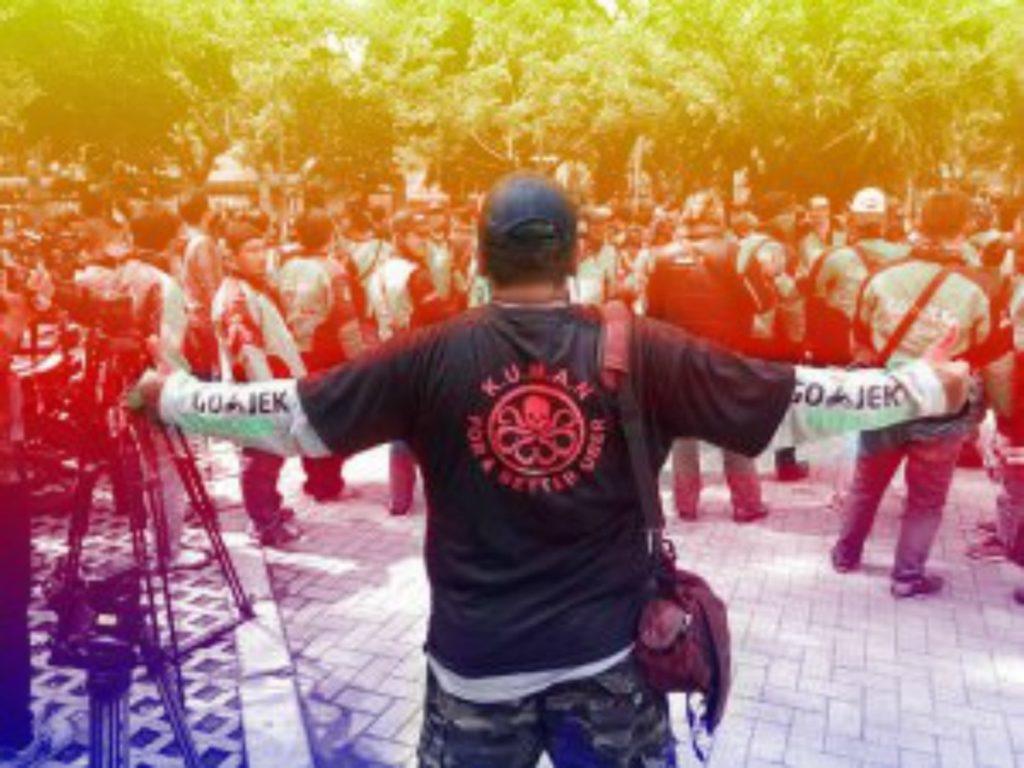
Ricardo: One of the biggest problems is with a fascist group inside….
Jesus: So there are nationalists?
Ricardo: Yes, nationalists. Sri Bintang Pamungkas – that’s the leader of the group. And there’s also what we call in Indonesia a political broker. Say that you are a part of the Clinton side of the party, and then you come to me and say – or you’re from the fascist group, national assembly – and you try to break us up. You came with a lot of money and said, guys, let’s work with me and we will do all the demonstrations against the government, as the government is not good. You give the money as an incentive, like we have in Indonesia. There are a lot of people like that who work for the parties.
Jesus: They work for one of the main political parties?
Ricardo: They work for the opposition party, the one that is not governing.
Jesus: They’re trying to buy supporters and use them against their political opponents, and trying to get the union to be part of a political party.
Ricardo: Yes. They say, let’s come with me and then I’ll give you money. And if someone can get more than ten people with them, he will get more money. Then there are also the people that are still scared of communism and they think that anarchism is a part of communism.
Ricardo: That’s also something else that PPAS and KUMAN need to work on.
Jesus: You’re trying to do a lot of education and tell people that anarchism has nothing to do with communism?
Ricardo: Yes, you don’t have to be a communist to be an anarchist. But I am a communist, so….
Jesus: Well, that’s maybe a subtlety of terminology that can be discussed later on once people have a different understanding of what communism is. Can you just briefly say what happened in 1965, and why people have this fear of communism?
Ricardo: Yes, we used to have the president Sukarno. He is the one that fought and said no to the United States. He always said no to the CIA, and he had good relations with Eastern Europe, with Russia, the Czechs.… There was a rumor that seven army generals were going to make a coup against the president.
Jesus: So the generals were assassinated, and it is unclear exactly what happened, but after that the communists were blamed.
Ricardo: After that day, after the 1 October, I don’t believe it, but General Suharto had a signed paper that he said Sukarno gave him, a commandment to lead the country. We believe that Suharto had a gun to Sukarno’s head and made Sukarno give him this.
Suharto took power with force after the assassinations of the generals. Since that day, he started to bring down everything that had to do with communism. He blamed the killing of the generals on the communists. At the time the Indonesian communist party was one of the biggest parties in Indonesia, so he just chopped down everything and he killed a lot of people.
Jesus: Something like 650,000 people were killed, and then the people who did the killing are still in power, more or less?
Ricardo: Yes.
Jesus: And so that’s why people don’t like the word communist, which now causes trouble for KUMAN? Because people now associate anything revolutionary, anything anti-capitalist – they associate that with this period and the people who Suharto said tried to destabilise the country, who had to be massacred
Enrique: Yes. And this is the challenge for KUMAN; to explain syndicalism is this, and communism is this. This is a big challenge inside KUMAN, I think.
Jesus: Okay, last thoughts? What’s next for the struggle?
Enrique: I guess it will be same demands, but a different strategy. I guess I don’t need a lot of people for the next strike; I just need maybe 50 to make chaos. This is the strategy, that we made with all the regions’ delegates from the union.
Jesus: This is what people decided to do after the evaluation of the last strike? Now people think: okay, we need to have more impact. And cause trouble.
Enrique: Yes, more impact, and we will be seen more.
Ricardo: They have to do it with really good preparation; otherwise it’s going to be the same again.
Jesus: And you’re hoping for international support for your struggle. What can people do?
Ricardo: Just do a picket. It doesn’t have to be a demonstration, but like for them to show us banners in front of the Uber management, saying that this is solidarity for the KUMAN drivers in Indonesia.
Jesus: And if you’re an Uber driver then you should organize a union and join KUMAN, International.
Enrique: KUMAN, USA.
Crimethinc
Länk: https://itsgoingdown.org/6000-uber-drivers-joined-anarchist-union-indonesia/